Transfer on Death Deeds in North Carolina Law
This file provides comprehensive information regarding the Transfer on Death Deeds as enacted by the General Assembly of North Carolina. It outlines the procedures, definitions, and legal implications associated with the transfer of property upon death. Perfect for beneficiaries, estate planners, and legal professionals seeking clarity on this statutory provision.
Edit, Download, and Sign the Transfer on Death Deeds in North Carolina Law
Form
eSign
Add Annotation
Share Form
How do I fill this out?
To fill out this form, start by entering the full names of the transferor(s) at the designated section. Next, specify the designated beneficiary or beneficiaries who will receive the property upon the transferor's death. Make sure to check that all information is accurate before saving and recording the document.

How to fill out the Transfer on Death Deeds in North Carolina Law?
1
Enter the transferor(s) names in the appropriate fields.
2
Specify the designated beneficiary or beneficiaries.
3
Indicate the property details that are being transferred.
4
Sign and date the transfer on death deed.
5
Record the finalized deed with the county register of deeds.
Who needs the Transfer on Death Deeds in North Carolina Law?
1
Individuals planning their estates need this file to provide clear directives on property transfer.
2
Lawyers specializing in estate planning utilize this document for their clients to carry out their wishes.
3
Real estate professionals may need this form to facilitate property transfers between parties.
4
Beneficiaries of estates require this file to understand their rights and receive their inheritances.
5
Financial advisors may refer their clients to this document to provide guidance on assets and estate planning.
How PrintFriendly Works
At PrintFriendly.com, you can edit, sign, share, and download the Transfer on Death Deeds in North Carolina Law along with hundreds of thousands of other documents. Our platform helps you seamlessly edit PDFs and other documents online. You can edit our large library of pre-existing files and upload your own documents. Managing PDFs has never been easier.

Edit your Transfer on Death Deeds in North Carolina Law online.
You can easily edit this PDF on PrintFriendly, allowing for the customization of transfer details according to your specifications. Simply upload the document, make the necessary changes, and ensure everything is to your preference. Once you're satisfied, you can download the updated PDF immediately.

Add your legally-binding signature.
Signing the PDF on PrintFriendly is straightforward; you can add your signature electronically with just a few clicks. This feature ensures that all signatures are legally binding and securely attached to your document. After signing, you can save and download the PDF for your records.

Share your form instantly.
Sharing your PDF on PrintFriendly is simple and efficient. You can send your document via email or share it on various platforms directly from the site. This feature facilitates easy distribution of important legal documents to relevant parties.
How do I edit the Transfer on Death Deeds in North Carolina Law online?
You can easily edit this PDF on PrintFriendly, allowing for the customization of transfer details according to your specifications. Simply upload the document, make the necessary changes, and ensure everything is to your preference. Once you're satisfied, you can download the updated PDF immediately.
1
Upload your PDF document to PrintFriendly.
2
Select the text or fields you want to change.
3
Make your necessary edits directly in the document.
4
After editing, review the document for accuracy.
5
Download the finalized version of your edited PDF.

What are the instructions for submitting this form?
To submit your Transfer on Death Deed, you must record the document at your local county register of deeds office. Make sure you submit the deed before the transferor's death to ensure its validity. For electronic submission, refer to your county's specific guidelines, as some may allow online recording, while others require physical submission.
What are the important dates for this form in 2024 and 2025?
The Transfer on Death Deed law was enacted on March 30, 2021. It's important to stay informed on any amendments to the law, especially if the state makes updates in 2024 and 2025 regarding procedures or requirements. Regularly check legal resources or government announcements for updates affecting beneficiaries and estate planning.

What is the purpose of this form?
The Transfer on Death Deed serves to simplify the transfer of property ownership after one's death, eliminating the need for probate. This legislative provision allows individuals to designate beneficiaries, ensuring their intentions regarding property distribution are honored. It provides a straightforward process to plan for asset transfer while potentially easing the burden on heirs during a difficult time.

Tell me about this form and its components and fields line-by-line.

- 1. Transferor(s): The names of the individuals transferring the property upon their death.
- 2. Designated Beneficiary: The individual(s) who will receive the property after the transferor's death.
- 3. Property Description: A detailed description of the property being transferred.
- 4. Signature: The signature of the transferor is required for validity of the deed.
- 5. Date: The date the document is signed and executed.
What happens if I fail to submit this form?
Failing to submit the Transfer on Death Deed correctly may result in complications with property transfers upon death. Without a valid deed, the property may have to go through probate, leading to delays and additional legal challenges. Ensuring all details are accurate and the deed is recorded appropriately is crucial for the intended beneficiaries.
- Probate Process: If not submitted properly, the property may need to go through probate, potentially complicating your estate.
- Beneficiary Rights: Failure to complete the deed could jeopardize beneficiary rights and intentions.
- Legal Validity: Incomplete or improperly recorded deeds may be deemed invalid, resulting in legal disputes.
How do I know when to use this form?

- 1. Estate Planning: Utilize this form to specify how your property is divided among heirs.
- 2. Property Transfer: Use it to simplify the transfer of real property without the need for probate.
- 3. Beneficiary Designation: Ideal for establishing clear beneficiary rights for your assets.
Frequently Asked Questions
What is a Transfer on Death Deed?
This is a legal document that allows an individual to transfer property to a designated beneficiary upon their death.
How do I fill out a Transfer on Death Deed?
You fill out the names of the transferor(s), designate beneficiaries, and include property details in the provided fields.
Can I edit the PDF after downloading it?
Yes, once you download the document, you can edit it using compatible PDF editing software.
What happens if I change my mind about the beneficiaries?
You can revoke the deed by preparing a new one that explicitly states the revocation.
Where do I submit the Transfer on Death Deed?
You should record it in the office of the register of deeds in your county.
Is a Transfer on Death Deed revocable?
Yes, it remains revocable during the lifetime of the transferor.
Who benefits from a Transfer on Death Deed?
Designated beneficiaries named in the deed receive property after the transferor's death.
What if my designated beneficiary dies before me?
The beneficiary's share typically lapses unless alternate beneficiaries are named.
Do I need a lawyer to create this deed?
While it's not legally required, consulting a lawyer can ensure your document meets all legal criteria.
Can multiple properties be included in one Transfer on Death Deed?
Yes, you can list multiple properties in a single deed as long as it complies with the legal requirements.
Related Documents - Transfer on Death Deeds NC
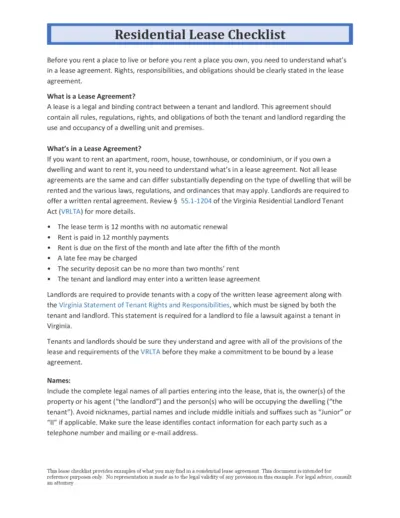
Residential Lease Agreement Checklist for Tenants and Landlords
This document provides a detailed checklist of what both tenants and landlords need to know and include in a residential lease agreement. It covers key elements such as lease terms, rent payment schedules, and maintenance responsibilities. Use this guide to ensure all rights and obligations are clearly outlined in your lease agreement.

Residential Lease or Month-to-Month Rental Agreement
This file contains a comprehensive residential lease or month-to-month rental agreement used in California. It provides details on terms, obligations, and conditions for both landlords and tenants. Perfect for those seeking a standardized rental agreement form.
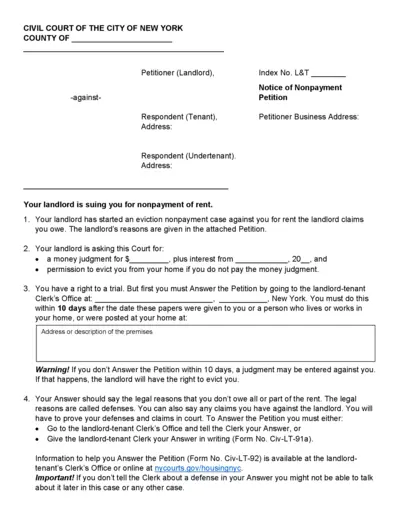
Civil Court of the City of New York Nonpayment Petition
This document is a Notice of Nonpayment Petition issued by the Civil Court of the City of New York. It details the actions that a landlord can take against a tenant for nonpayment of rent. It includes instructions on how the tenant can respond and their rights.

Form 1099-MISC: Miscellaneous Income for 2013
This file is a 2013 version of the IRS Form 1099-MISC used to report miscellaneous income. It includes fields for reporting various types of payments made to individuals or entities. The form is typically filed by payers to report income paid to recipients.
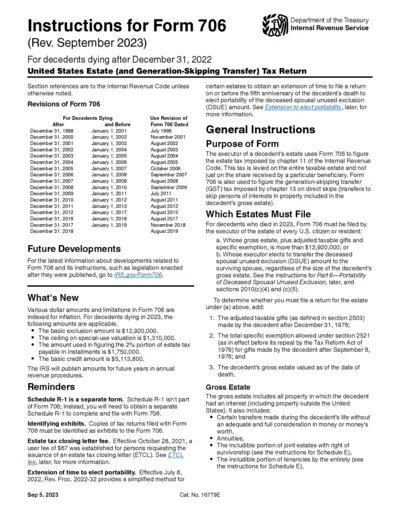
Instructions for Form 706 (Rev. September 2023)
This document provides detailed instructions for completing Form 706, the United States Estate (and Generation-Skipping Transfer) Tax Return for decedents dying after December 31, 2022. It includes information on revisions, general instructions, and specific filing requirements. The instructions also cover important updates and reminders related to the form.

PhilHealth Report of Employee-Members Form Instructions
This file provides instructions for employers on how to fill out and submit the PhilHealth Report of Employee-Members form. It is essential for employers to report new hires to PhilHealth to ensure proper coverage. Detailed instructions and requirements are included.
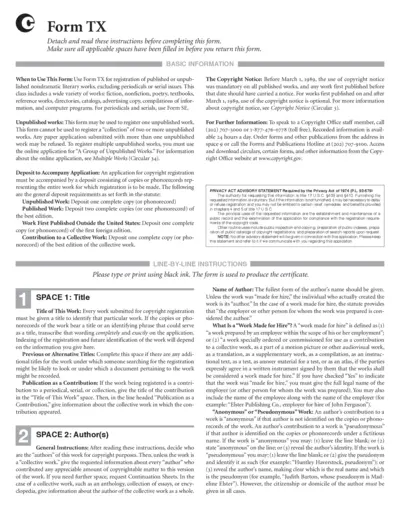
Copyright Registration Form TX Instructions
This form is used for the registration of nondramatic literary works, such as fiction, nonfiction, poetry, textbooks, and computer programs. It provides detailed information on how to complete the form, including what information is required for each section and how to submit the application. Use it to ensure your work is properly registered for copyright protection.
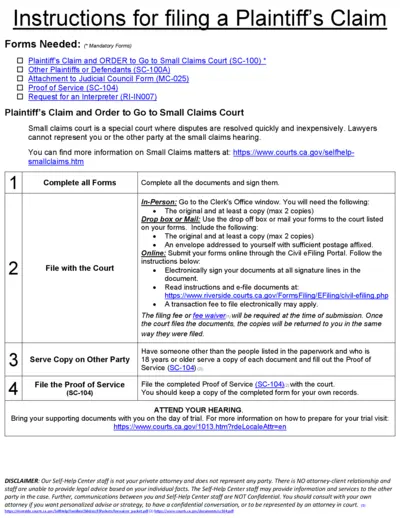
Plaintiff's Claim and Instructions for Small Claims Court
This file provides instructions and necessary forms for filing a Plaintiff's Claim in Small Claims Court. It includes details on filling out, submitting, and serving the forms. Ensure to follow the steps carefully to protect your rights.
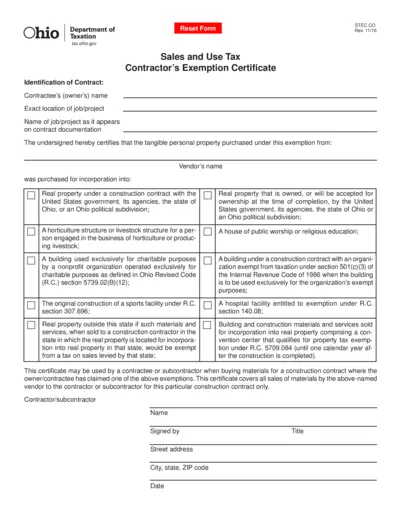
Ohio Sales and Use Tax Contractor's Exemption Certificate
This document is the Ohio Sales and Use Tax Contractor's Exemption Certificate. Contractors use this form to claim exemptions on certain taxable goods for specified exempt uses. It's crucial for contractors working with tax-exempt entities or on tax-exempt projects.
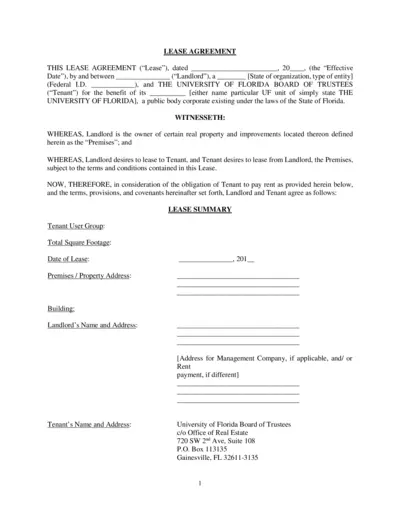
Lease Agreement for University of Florida Premises
This lease agreement file outlines the terms and conditions for renting a property owned by the Landlord to the University of Florida Board of Trustees. It covers key aspects such as lease term, rent details, improvements, and permitted use. Ideal for landlords and tenants involved in leasing agreements.
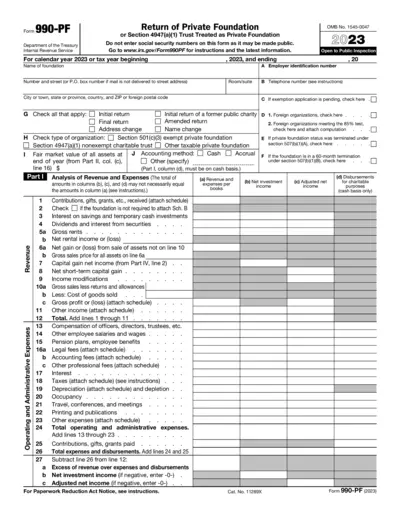
Return of Private Foundation Form 990-PF 2023
Form 990-PF is a return for private foundations required by the IRS. It includes information on revenue, expenses, and other financial details. Avoid entering social security numbers on this form.
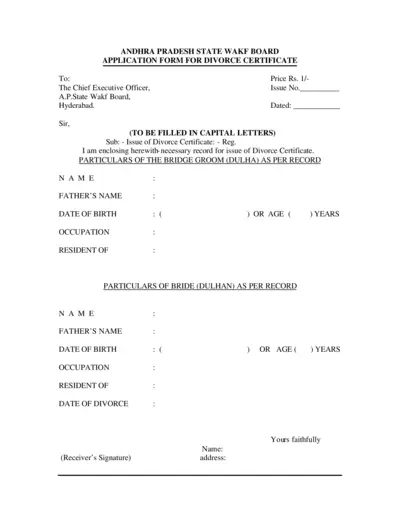
Application Form for Divorce Certificate - Andhra Pradesh State Wakf Board
This form is used to apply for a Divorce Certificate from the Andhra Pradesh State Wakf Board in Hyderabad. The form requires details of both bride and groom as per recorded information. It also includes fields for verification and office use only.